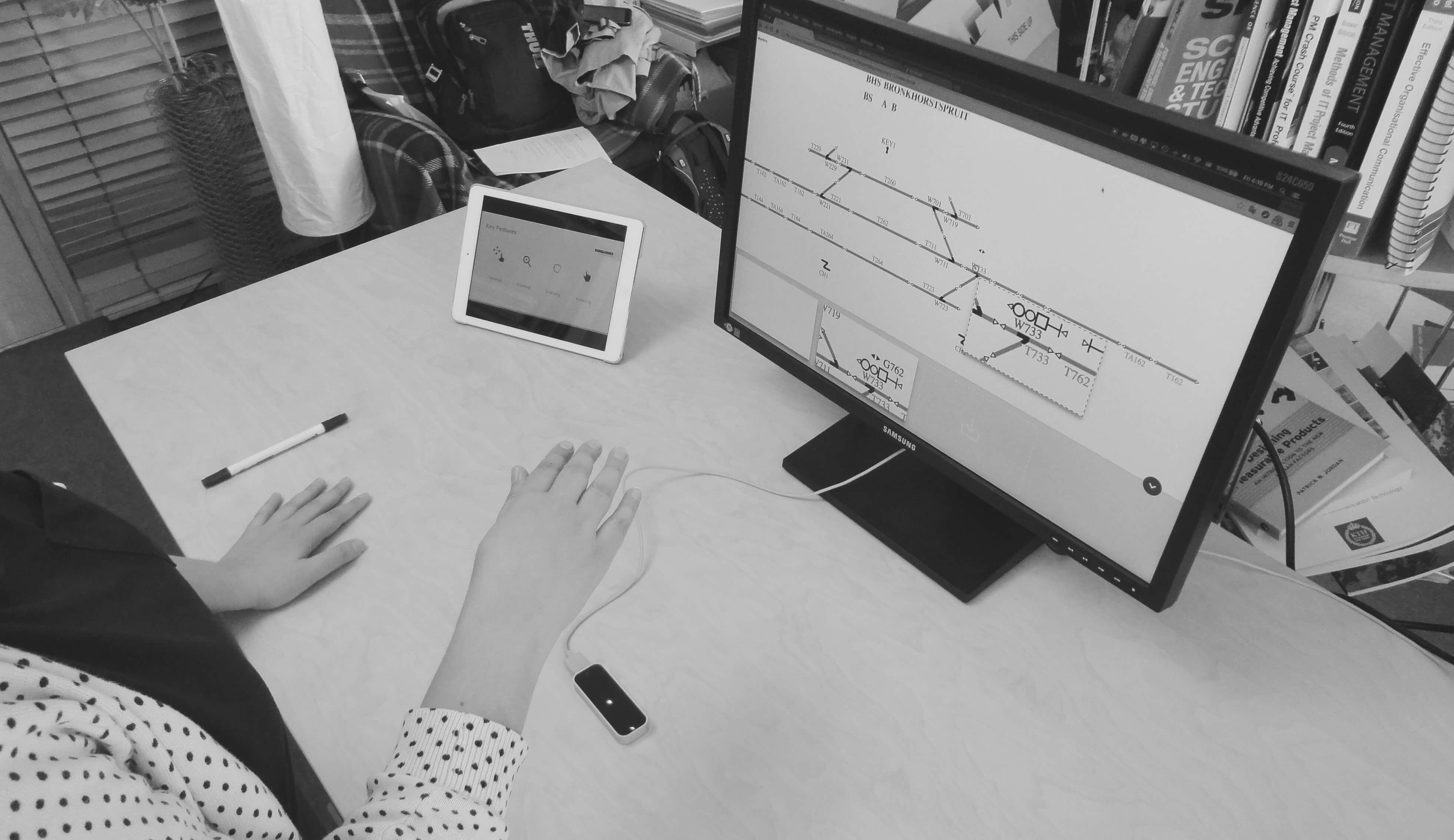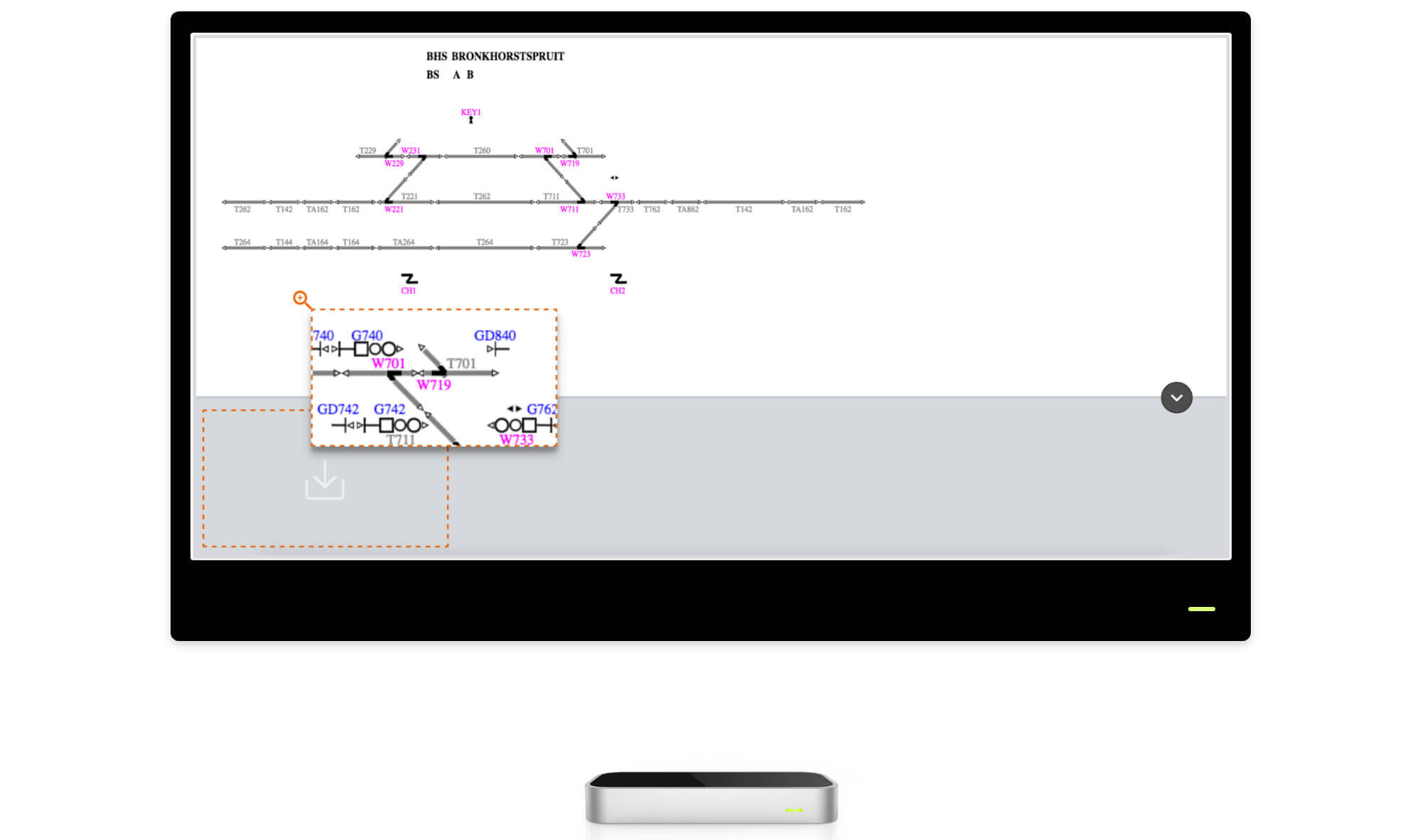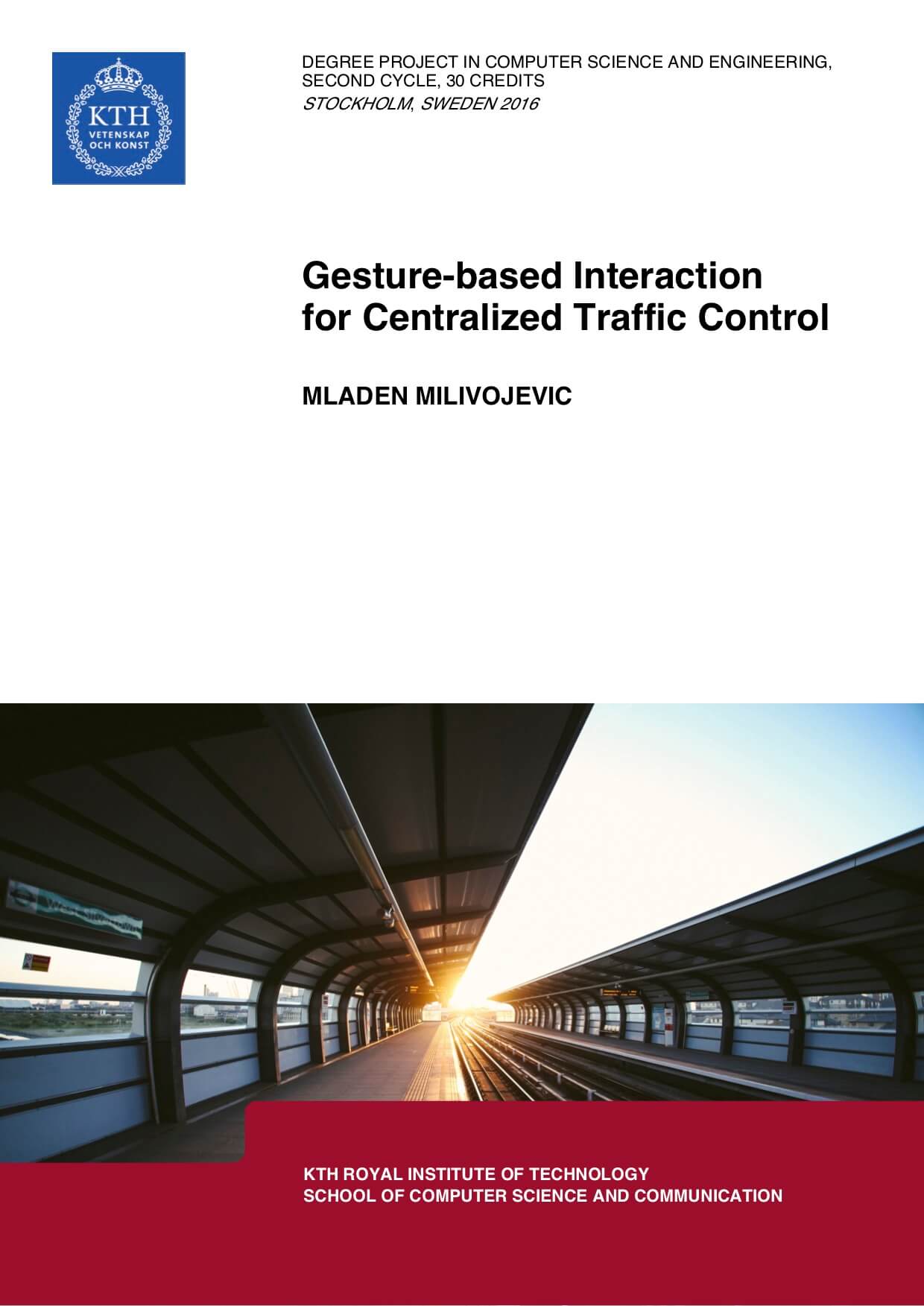
Gestures are designed to help dispatchers navigate, control and command intuitively, using their hands. Designs are based on the identified usability issues and are intended to improve the current UX and setup of the CTC system.
Bombardier Transportation AB was impressed by the project and the saw the chance to innovate in rail transportation. They have decided to initiate the patent process and make Gesture-based Interactions with the CTC systems patented. My name stands as an inventor of the interactions and the company itself owns the right to use the patent.
The purpose of the simulator is to demonstrate the designed interactions and visually represent how dispatchers use the CTC system. The setup consists of a computer running the CTC simulator on the monitor and a Leap Motion device that enables hand gesture control.

The map shown on the top of the screen is a map that has limited information about the traffic. If the dispatcher requires an overview of a specific part of the traffic (in detail), the window hovering the map will reveal those hidden details.The bottom bar serves as a placeholder where dispatchers can have a realtime snapshot of the desired part in detail.
Usability testing aimed to examine the intuitiveness of the designed gestures. The dispatchers from Trafikverket were unavailable at that time therefore, the test was conducted with participants from different backgrounds, ages, and interests. The test helped determine the usability, gather statistical data and draw the conclusion of the project.

The published paper describes the entire project, its research, methods, and results in more detail. Feel free to download and read it yourself.